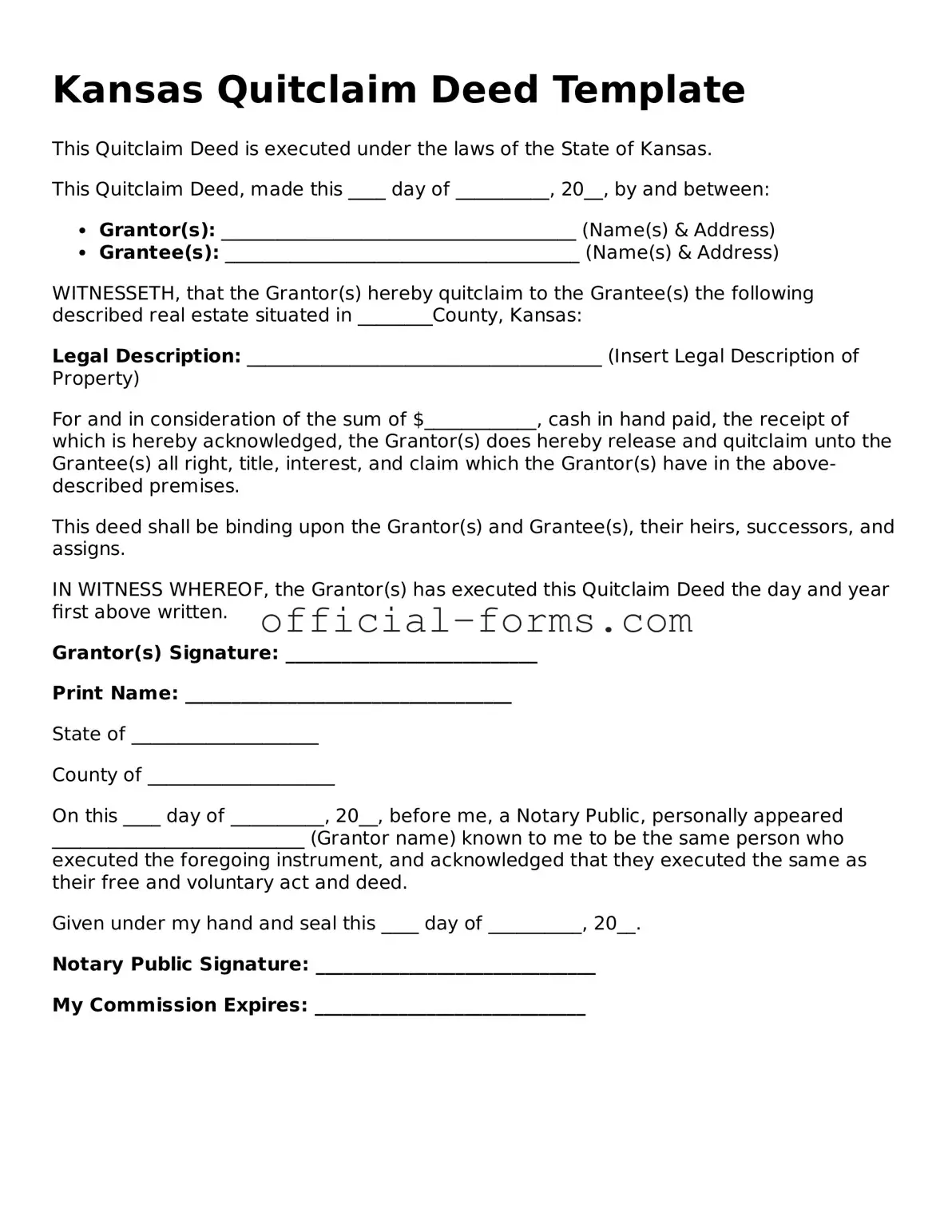Filling out a Kansas Quitclaim Deed form can seem straightforward, but many people make common mistakes that can lead to complications. One of the first errors is not including the correct names of the parties involved. It’s crucial to ensure that the grantor (the person transferring the property) and the grantee (the person receiving the property) are accurately named. Missing or incorrect names can invalidate the deed.
Another frequent mistake is neglecting to provide a complete legal description of the property. This description should detail the boundaries and location of the property being transferred. Without this information, it can be difficult to identify the property in question, which may lead to disputes in the future.
People often forget to sign the deed. A Quitclaim Deed must be signed by the grantor. If the grantor does not sign, the deed is not valid. In some cases, witnesses or notarization may be required, depending on local regulations. Failing to meet these requirements can render the deed ineffective.
Additionally, many individuals overlook the need to check for outstanding liens or encumbrances on the property. If there are existing debts tied to the property, the new owner may inherit these obligations. It's wise to conduct a title search before completing the deed to avoid any surprises.
Another common error is not providing the appropriate consideration. While a Quitclaim Deed does not require a monetary exchange, it should still state what the consideration is, even if it is a nominal amount. This detail helps clarify the intention behind the transfer.
People sometimes fail to record the deed with the appropriate county office. Recording the deed is essential for establishing public notice of the property transfer. If the deed is not recorded, the transfer may not be recognized in legal disputes, and future buyers may not be aware of the ownership change.
Some individuals also forget to use the correct form. Kansas has specific forms for Quitclaim Deeds, and using an outdated or incorrect version can lead to issues. Always ensure that you are using the most current form to avoid unnecessary complications.
In addition, many overlook the importance of consulting with a legal professional. While it may seem like a simple task, understanding the implications of a Quitclaim Deed can be complex. A legal expert can provide valuable insights and help avoid pitfalls.
Finally, a lack of attention to detail can lead to typographical errors. Even small mistakes, such as misspellings or incorrect dates, can have significant consequences. Reviewing the document carefully before submission is essential to ensure accuracy.
